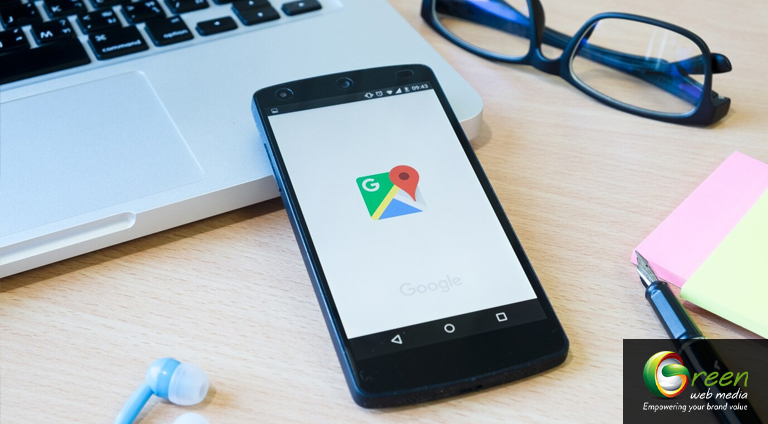What Is Mobile-First Indexing?

A significant change in how search engines crawl and rank websites is known as “mobile-first indexing.” It implies that when evaluating your website’s search engine ranking, search engines—especially Google—give preference to its mobile version.
This is a reaction to the increasing tendency of individuals accessing the internet through mobile devices, such as tablets and smartphones.
The importance of mobile-first indexing is multifaceted. It first depicts user behaviour as it actually is. Since mobile devices account for the bulk of web traffic, search engines must make sure that the mobile user experience is optimised.
18% of local smartphone searches led to a purchase within a day, whereas only 7% of non-local searches led to a sale.
Secondly, it underscores the tremendous significance of mobile SEO (Search Engine Optimization). This necessitates that website owners, particularly those seeking SEO consulting services India, pay close attention to ensuring their websites are mobile-friendly. This focus on mobile optimization is crucial for maintaining or improving search engine rankings in an increasingly mobile-driven digital landscape.

[I] Evolution of Search Engines
1. Desktop-First Indexing
Historically, search engines primarily crawled and indexed the desktop versions of websites. This approach made sense when desktop computers were the dominant means of internet access.
However, as more people in India and around the world started using mobile devices, this approach became less representative of user behaviour. For website owners, especially those seeking SEO consulting services India, this shift highlights the increasing importance of mobile optimization.
2. Shift to Mobile-First Indexing
Recognizing the changing landscape, search engines, particularly Google, shifted, making it crucial for website owners, especially those considering the services of an outsource SEO company India.
They transitioned to Mobile-First Indexing. This means that the mobile version of a website is the first thing considered when indexing and ranking. However, this doesn’t mean that desktop content is irrelevant; it’s still considered, but the mobile version takes precedence.
3. Reasons for the Shift
The shift to Mobile-First Indexing is driven by changing user behaviour. Mobile devices now dominate internet access, and search engines aim to ensure the best user experience for this majority. This makes it crucial for website owners to consider outsourcing SEO to an outsource SEO company India to stay mobile-focused.

[II] How Mobile-First Indexing Works
A. Crawl and Render
When search engines index your site, they send web crawlers or bots to analyse and collect data. With Mobile First Indexing, these bots simulate mobile device experiences. This means they will view and evaluate your website as if they were a mobile device, which includes assessing the mobile-friendliness of your site.
B. Mobile-Friendly Ranking Factors
Mobile optimization is now critical for SEO. Factors like responsive design (where your website adapts to different screen sizes) and touch-friendly navigation have become crucial. Websites that load quickly and provide a seamless mobile experience are favoured in search rankings.
C. Content Parity
Maintaining content parity between your desktop and mobile versions is crucial. This means ensuring that all critical information and videos are available and accessible on both versions. Content should not be sacrificed on the mobile site.
D. Mobile-First Indexing Signals
Search engines use various signals to determine mobile-friendliness. These can include mobile XML sitemaps and structured data markup that works on mobile. Additionally, there are other mobile-specific optimization practices.
[III] Implications for Website Owners
A. Mobile Optimization
To rank well in Mobile-First Indexing, you need to ensure your site is optimized for mobile devices. This includes responsive design and fast-loading pages.
Nearly 46% of all Google searches have local intent, with mobile users often seeking local information, like nearby businesses and directions.
B. Responsive Web Design
Responsive web design ensures your website adapts seamlessly to different screen sizes and devices. It’s a crucial component of mobile optimization, and it ensures a consistent user experience across various devices.
C. Mobile User Experience
Focus on enhancing the user experience for mobile visitors. This includes touch-friendly navigation menus and optimizing the placement of important elements to make them easily accessible on smaller screens.
D. SEO Best Practices
Keep updated with the latest mobile SEO best practices. This includes optimizing for mobile-specific keywords and ensuring that your site is technically sound, which includes mobile-friendly page speed and structured data.

[IV] Common Challenges
A. Dynamic Content
Websites with dynamic content, such as JavaScript-based interactivity, may face challenges in ensuring the mobile version is as comprehensive as the desktop version. Careful planning is needed to provide equivalent functionality on mobile.
B. Structured Data Markup
Implementing structured data markup for mobile can be challenging, but it’s essential for improving how search engines understand your content.
C. Site Speed
Mobile users expect fast-loading pages. To address this challenge, optimize images and scripts. Additionally, enable browser caching and leverage content delivery networks to enhance site speed.
D. Mobile-Friendly Testing
Regularly use mobile-friendly testing tools to identify and resolve issues that may affect your website’s mobile performance. Google’s Mobile-Friendly Test is a valuable tool for this purpose.
[V] Benefits of Mobile-First Indexing
A. Improved User Experience
Prioritizing mobile users leads to a better overall experience for the majority of your audience. This can result in increased user satisfaction and engagement, potentially leading to higher conversions.
B. Enhanced SEO Performance
While complying with Mobile-First Indexing requirements, you can achieve improved rankings and gain better visibility in search results.
C. Adaptation to Mobile-Driven Traffic
Mobile-First Indexing allows your website to adapt to the evolving digital landscape. This means you can ensure your website caters to the growing mobile-driven audience, and relevant.
[VI] Tools and Resources
A. Google Search Console
This is a powerful tool to monitor your website’s performance in mobile search results. It provides mobile-specific and highlights mobile issues, and allows you to submit mobile sitemaps for better indexing.
B. Mobile-Friendly Testing Tools
Tools like Google’s Mobile-Friendly Test and PageSpeed Insights can help assess your website’s mobile optimization. Additionally, the Mobile Usability Report in Google Search Console can pinpoint areas for improvement.
C. SEO Guidelines
Stay informed about Google’s Mobile SEO guidelines and industry best practices through official documentation and reputable SEO resources. Regularly checking for updates and changes in guidelines is crucial for maintaining mobile-friendliness.
[VI] Tools and Resources
A. Google Search Console
This is a powerful tool to monitor your website’s performance in mobile search results. It provides mobile-specific and highlights mobile issues, and allows you to submit mobile sitemaps for better indexing.
B. Mobile-Friendly Testing Tools
Tools like Google’s Mobile-Friendly Test and PageSpeed Insights can help assess your website’s mobile optimization. Additionally, the Mobile Usability Report in Google Search Console can pinpoint areas for improvement.
C. SEO Guidelines
Stay informed about Google’s Mobile SEO guidelines and industry best practices through official documentation and reputable SEO resources. Regularly checking for updates and changes in guidelines is crucial for maintaining mobile-friendliness.
[VII] Mobile-First Design Principles
A. User-Centric Design: When designing a website with Mobile-First Indexing in mind, put the user’s needs first. Consider how the site functions. Think about how content is presented and how navigation works on mobile devices. This approach helps create a more user-friendly experience.
According to a study, 94% of users judge websites based on responsive web design and mobile-friendliness.
B. Prioritizing Mobile Content: Think about what content is most important to your mobile users. Streamline the mobile version of your site by focusing on key information and features, which ensures a faster and more engaging mobile experience.
C. Progressive Enhancement: Start with a solid foundation for your mobile website and then enhance it for larger screens. This approach ensures that your site works well on all devices, from smartphones to tablets to desktop computers.
[VIII] Mobile SEO and Local SEO
A. Local SEO Importance: For businesses with physical locations, Mobile-First Indexing has particular significance. Local SEO strategies become even more vital because mobile users often seek local information, such as nearby stores and services.
88% of mobile device searches for nearby businesses result in a call or in-person visit within a day.
B. Mobile-First for Local Businesses: Local businesses must ensure that their mobile websites are well-optimized for local search. This includes optimizing Google My Business listings and making sure contact information is readily accessible on mobile sites.
VIII. Conclusion
In conclusion, Mobile First Indexing represents a pivotal shift in the realm of SEO. It corresponds to the evolving digital landscape where mobile devices are becoming the primary means of internet access. Remaining informed about industry guidelines and making the most of available tools are crucial for maintaining and enhancing your site’s mobile performance and online presence. While doing so, your website is better positioned for success in the continually changing world of online search.

FAQs
Q1: What happens if my website doesn’t have a mobile version?
Ans – If your website doesn’t have a mobile version, Google and other search engines will still crawl and index your desktop version. However, you may not rank as well in mobile search results. It’s highly recommended to create a mobile-friendly version or implement responsive design to ensure a better user experience on mobile devices.
Q2: Does Mobile-First Indexing mean that mobile-only websites are better for SEO?
Ans – Not necessarily. While mobile-only websites can be a valid strategy, it’s essential to have a mobile-responsive design that caters to various screen sizes. A well-optimized, responsive website that performs well on both mobile and desktop is generally the preferred approach.
Q3: Do I need to worry about content parity between my desktop and mobile versions?
Ans – Yes, maintaining content parity is crucial. You should aim to provide the same core content and functionality on both versions. If there’s a significant discrepancy between the two, it could impact your search rankings and user experience.
Q4: What should I do if my website has dynamic content that doesn’t translate well to mobile?
Ans – Websites with dynamic content should focus on creating mobile-friendly equivalents. It might require some development work to ensure that interactive features and content are accessible and usable on mobile devices. Consult with web developers to find solutions.
Q5: Are there any tools to check if my website is optimized for Mobile-First Indexing?
Ans – Yes, there are several tools available. Google’s Mobile-Friendly Test and PageSpeed Insights can assess your website’s mobile performance. Additionally, Google Search Console provides insights into mobile-specific issues and suggestions for improvement.





